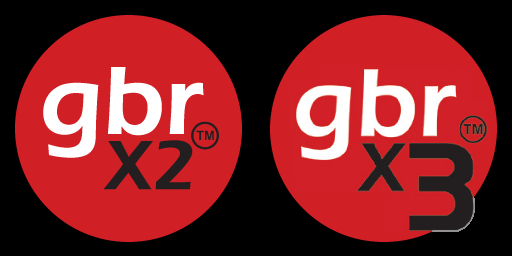Routing tabs (bridges) are normally placed between the boards in a production panel in order to maintain geometrical stability during the routing process. These tabs are removed in the final steps of the routing process.
Tab placement
Macaos RapidCam supports two types of routing tabs. These differ in how they are removed in the final steps of the routing process.
Normal tabs
are tabs placed between two board edges, or between a board edge and unused panel material. They are normally removed by short routing strokes.
Corner tabs
are tabs placed at the corner(s) of one or more adjacent boards. Since corner tabs are removed by drilling, they should not be placed where the corner of one board is adjacent to the edge of another board.
Routing tabs may be placed automatically or manually.
When in manual placement mode, clicking on a board edge places a tab at that location for every board in the panel. To place on only one board, hold down the Ctrl key when clicking. Tabs may be removed in the same manner.
A check mark at Auto place - Centers places a tab at the midpoint of each board edge. A check mark at Auto place - Corners places a corner tab at each board corner.
Corner tabs which are adjacent to any board edge should be removed manually, since the tab removal drill will take a small bite out of the adjacent board.
Routing strategies
Macaos RapidCam supports a 4-phase routing strategy.
- Pre-drilling drills a hole at the plunge and retract points for each routing slot. Pre-drilling greatly reduces wear on the cutting tool and also prevents dust buildup in the slots. The drill holes shown on each side of a tab are drilled in this phase. These drill holes are normally included in the Unplated Drill Through output process.
- Routing cuts the slots between the tabs. This is the main routing process.
- Tab removal removes all normal tabs (not corner tabs). This is a critical phase in the routing process, since geometric stability must be maintained while at the same time removing the basis for stability. Macaos RapidCam supports three different strategies for managing tab removal:
- The individual boards may be pinned in place prior to tab removal.
- A cover plate may be fastened over the panel during tab removal. In most cases, this (together with the machine's press foot) should be sufficient to prevent board movement during tab removal.
- Some routing machines are able to make small routing strokes while the press foot is held stationary. Macaos RapidCam supports generating machine code for this kind of tab removal.
- Corner tab removal is done by drilling away each corner tab. The corner tab drill holes are shown at the center of each corner tab. A cover plate should be fastened over the panel to prevent boards from moving as the corner tabs are drilled. This process removes a small (<0.5 mm) bite from the corner of the board, a feature which many customers appreciate, since it removes the sharpness of the board corners.



